Redwood trees have two types of leaves, scientists find – a trait that could help them survive in a
New research shows that coast redwood trees have a surprising adaptation that helps then thrive in both wet and dry environments.
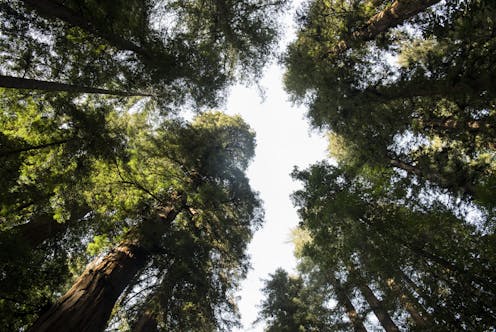
Coast redwoods are amazing trees that scientists have studied for generations. We know they are the tallest living trees and have survived for millennia, resisting fire and pests. Because redwoods are long-lived, large and decay-resistant, the forests they dominate store more above-ground mass, and thus presumably more carbon, than any other ecosystem on Earth.
Nonetheless, while working on a recently published study, colleagues at the University of California, Davis, and Cal Poly Humboldt and I learned a secret that had been sitting right under our noses.
Redwoods, it turns out, have two types of leaves that look different and perform very different tasks. This previously unknown feature helps the trees adapt to both wet and dry conditions – an ability that could be key to their survival in a changing climate.
Just enough water
Wherever trees grow, sooner or later their leaves get wet. For trees in wet environments, this can be a problem if films of water cover their stomata. These tiny pores allow carbon dioxide to enter leaves so the tree can combine it with water to make plant tissue through photosynthesis. Many trees that are common to wet forests have leaves with adaptations that prevent these water films from forming.
In contrast, trees growing in dry environments take advantage of brief bouts of leaf wetness to take up valuable water directly across the surfaces of their leaves, through special leaf structures, and even through their stomata. But some trees, including coast redwoods, live in both wet and dry environments with intense seasonal variation.
For broad-leaved trees like the holm oak, which grows in Mediterranean climates with dry summers and rainy winters, this seasonal wetness challenge is relatively easy to overcome. Their stomata are on the sheltered undersides of their leaves, which keeps them clear of water, while the leaves’ top surfaces absorb water. But redwoods are conifers, or cone-bearing trees, with thin, flat needlelike leaves, and they need a different way to balance the competing goals of repelling and absorbing water.
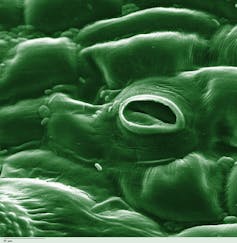
We knew we wanted to explore how redwoods met the paradoxical challenge of leaf wetness, how much water redwoods could absorb and which leaf features caused differences in water uptake capacity. What we learned came as a total surprise.
Big trees with big secrets
Scientists have long known about redwoods’ ability to absorb water through their leaves. But figuring out how much water redwoods can absorb this way, and how the capacity to do so might vary from one type of climate to another, is a real challenge in this species.
First, a big redwood has over 100 million leaves with a massive amount of surface area for water absorption. And these leaves drastically change structure with height, going from long and flat to short and awllike. So we couldn’t get this right by simply picking leaves at ground level.
To complicate matters further, gravity is always pushing down on the giant column of water rising upward through a redwood’s trunk. As a result, leaves at the top of the tree always have less available water than those lower down. The treetop’s inherent dryness should pull water into the leaf more quickly than into water-rich leaves at the bottom, just as a dry sponge picks up water faster than a damp one.
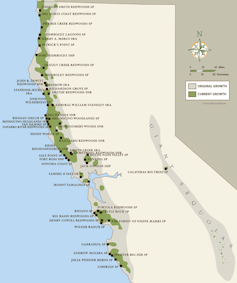
For an accurate picture of how redwoods absorbed water, we needed leaves from trees in wet and dry environments, and from multiple heights on those trees. To get them to their natural gravity-based water levels for analysis, we put our leaf samples in a fog chamber – in this case, an ice chest hooked up to a room humidifier – and measured weight gain over time to see how much water they could absorb.
A trail of clues
As we took apart clusters of redwood shoots to immerse them in fog, we divided each cluster into pieces. Redwood shoot clusters fan out from a woody core and are segmented into individual shoots of multiple ages, each with its own set of leaves. We separated shoots along the woody central axis from the much more common pliable shoots on the outer edges of each cluster.
It quickly became obvious that shoots from the center axis had leaves that could absorb water three times faster than peripheral leaves. When we looked inside the leaves with a microscope, we understood that they were two completely different types. They don’t look the same on the outside either, but this was so unexpected that we needed to see their internal structure to really convince ourselves.
The axial leaves were packed with water storage cells, but their phloem – tubes in the leaves that export photosynthetic sugars to the tree – appeared to be blocked and useless. If a tree has leaves, the conventional wisdom is that they are there for photosynthesis, but we wondered whether the axial leaves had a different purpose.
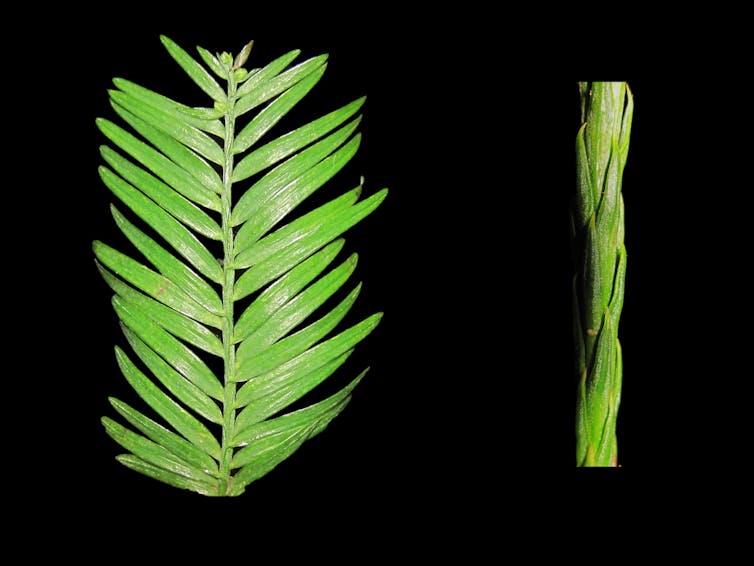
With some additional measurements, we found that redwoods’ axial leaves are specialized for absorbing water. Differences between the surfaces of axial and peripheral leaves, especially their wax coverage, cause the differences in their water absorption rates.
Unlike the axial leaves, redwoods’ peripheral leaves have waxy surfaces with lots of stomata. This helped to explain how they photosynthesize year-round regardless of the long wet season in much of their current habitat.
Further analysis showed that the redwoods’ axial leaves account for only about 5% of the trees’ total leaf area, and barely produce enough energy through photosynthesis to maintain themselves. But they contribute up to 30% of the trees’ total water absorption capacity. Together these two types of leaves balance the dueling requirements of photosynthesis and water absorption, allowing redwoods to thrive in both wet and dry habitats.
[More than 150,000 readers get one of The Conversation’s informative newsletters. Join the list today.]
Using large-scale tree measurements and equations for estimating redwood leaf area, we estimated that these thirsty giants can absorb as much as 105 pounds (48 kilograms) of water in the first hour of a rainfall wetting their leaves. That’s equivalent to 101 pints of beer.
The significance to redwoods
Understanding what causes the variation in redwood leaves’ uptake capacity can help us gauge differences in water uptake capabilities among trees and environments, now and in the future. In my opinion, this is the most potentially useful part of our study.
Redwoods vary their two leaf types to suit their local climates. In wet rainforests in the northern part of their range, above Mendocino County, the trees invest in fewer of the axial leaves that are specialized for absorbing water. These leaves are concentrated in the trees’ lower crowns, leaving the photosynthetically high-performing treetops free to maximize sugar production in the bright sun.
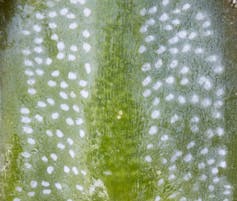
In dry forests on the southern margins of redwoods’ range, trees have more axial leaves in their water-stressed tops. This allows them to take better advantage of briefer leaf-wetting events, but it means they photosynthesize less per leaf area than redwoods in wetter areas.
Redwoods’ ability to shift leaf types to match regional climatic differences may help them adjust to climate change in an ever-drier California. That would be good news for conserving these epic trees, and it may be a promising feature to investigate as scientists try to link drought tolerance traits to regional differences among redwood populations.
Alana Chin received funding from the NSF GRFP
Read These Next
West Antarctica’s history of rapid melting foretells sudden shifts in continent’s ‘catastrophic’ geo
A picture of what West Antarctica looked like when its ice sheet melted in the past can offer insight…
How the ‘slayer rule’ might play a role in determining who will inherit wealth from Rob Reiner and h
These rules have a long history in the United States. They played a role in the notorious murders by…
The celibate, dancing Shakers were once seen as a threat to society – 250 years later, they’re part
‘The Testament of Ann Lee,’ Mona Fastvold’s 2025 film, depicts part of the long history of Shaker…






